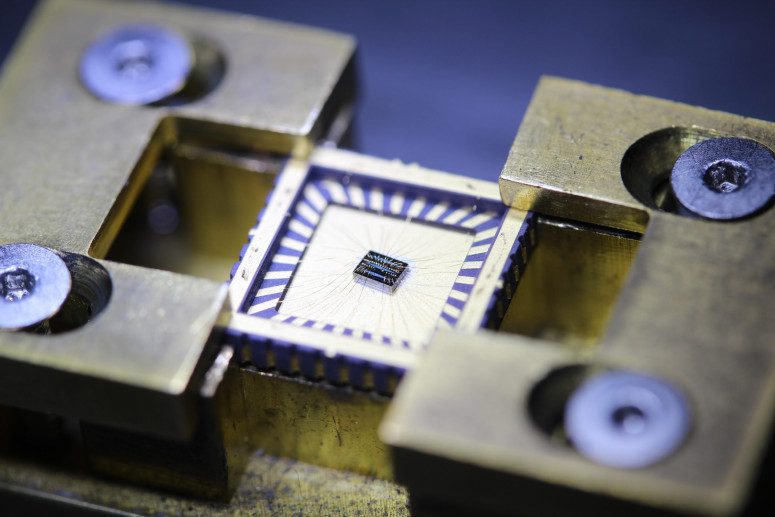15 Jun Partnerships bring together UW–Madison quantum computing research, industry leaders

HRL’s semiconductor quantum chip, known as SLEDGE, is one of the quantum computing devices that will be available for UW–Madison researchers and students under a new industry partnership through the LPS Qubit Collaboratory. Photo courtesy of HRL Laboratories
Two leading companies in semiconductor quantum computing are partnering with researchers at the University of Wisconsin–Madison, itself a long-time academic leader in quantum computing.
UW–Madison’s separate partnerships with Intel and HRL Laboratories are part of a first round of collaborations announced June 14 by the LPS Qubit Collaboratory (LQC), a national Quantum Information Science Research Center hosted at the Laboratory for Physical Sciences (LPS). Established in support of the National Quantum Initiative Act, LQC is facilitating partnerships between industry and academic and national labs to advance research in quantum information science.
“These collaborations are great examples of UW–Madison partnering with industry on the development of important technologies, in this case semiconductor quantum computers,” says physics professor Mark Eriksson, the UW–Madison lead on the partnerships.
Quantum computing uses the properties of quantum physics to perform computations. Not just faster versions of classical bits, the quantum bits, or qubits, in a quantum computer are fundamentally different than their classical counterparts. Because qubits are intrinsically quantum, they have the potential to solve certain problems — calculations for chemical processes or materials design, for example — more efficiently than classical computers. Silicon-based semiconductor qubits are among the most promising quantum computing technologies.



